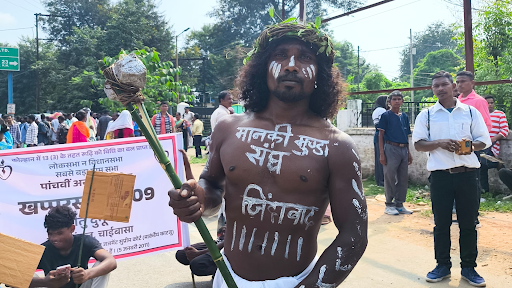



The Supreme Court heard a plea seeking enforcement of Article 355 in West Bengal due to violent protests in Murshidabad against the Waqf Amendment Act. The petitioners request central intervention for law and order issues, potentially invoking President's Rule and deploying central forces. The court is cautious about judicial overreach.

Copyright infringement not intended
Picture Courtesy: HINDUSTAN TIMES
Context:
The Supreme Court addressed a plea seeking Article 355 enforcement in West Bengal following violent protests in Murshidabad over the Waqf Amendment Act.
Background
In Murshidabad, a district in West Bengal, protesters were opposing the Waqf (Amendment) Act, a new law that changes how Waqf properties (Islamic charitable endowments) are managed. The protests turned violent, Shops and houses were vandalized, and hundreds of people fled their homes for safety.
Two petitioners filed a plea in the Supreme Court. They demand action because they believe the West Bengal government cannot maintain law and order. Specifically, they ask for:
The Supreme Court agreed to hear the plea. However, the court hesitated to issue direct orders, like forcing the Centre to invoke Article 355, because it might seem like judicial overreach.
About Article 355?
Article 355 outlines the Union government’s responsibility to protect states in India.
Article 355 assigns three clear tasks to the Union government:
Protects States from External Aggression: If a foreign country attacks a state (e.g., a pakistan military strike on Punjab), the Centre deploys the Indian Army or coordinates with allies to defend the state. This ensures no state faces an external threat alone.
Shields Against Internal Disturbance: When chaos erupts within a state—like communal riots, large-scale protests, or violence that the state government can’t control—the Centre intervenes. For example, in 2023, the Centre invoked Article 355 in Manipur, deploying Border Security Force units to curb violence after ethnic clashes killed several people.
Ensures Constitutional Governance: The Centre monitors state governments to confirm they follow the Constitution. If a state government acts against constitutional principles (e.g., failing to maintain law and order or protect minorities), the Centre can step in to restore order.
How Does Article 355 Work in Practice?
The President of India invokes Article 355 based on specific triggers, such as:
When invoked, the Centre takes actions like deploying central forces (e.g., CRPF or BSF), taking over law and order, or providing resources to stabilize the situation.
Must Read Articles:
Union Reimposes AFSPA in Manipur
Waqf Act 2025 Faces Legal Challenge
Source:
|
PRACTICE QUESTION Q. Critically analyze the role of the Governor in recommending the imposition of President's Rule. How does this provision balance federalism and central authority? 150 words |








© 2025 iasgyan. All right reserved